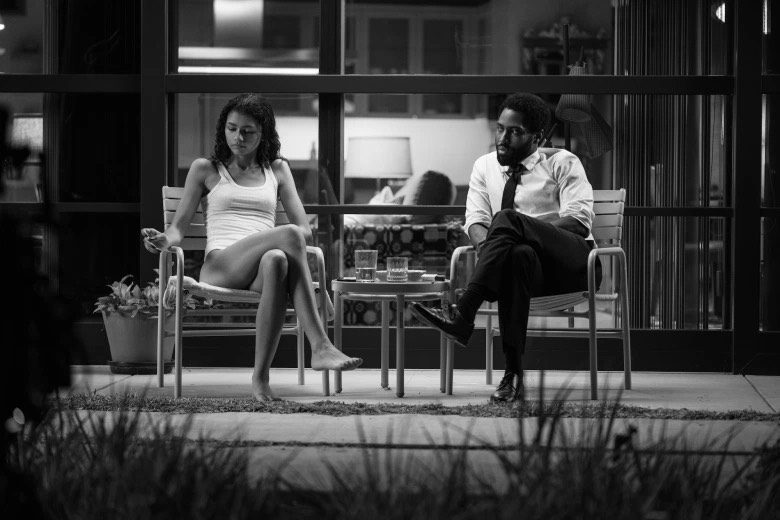A Hollywood couple brings the audience into an intense confrontation
Directed by Sam Levinson, the creator of the HBO series Euphoria, Malcolm & Marie is a black-and-white movie that tells the story of producer Malcolm Elliot (John David Washington) and his girlfriend Marie Jones (Zendaya) who spend a full night arguing, putting their relationship to the test.
Once you are 20 minutes into the movie, you already know what it will be about.
The story takes place in a Malibu house that the production company Malcolm works for has provided for him and Marie. They come home after Malcolm’s movie premiere, which went very well for him. He puts some music on, makes himself a drink and celebrates his accomplishment while dancing in the living room. Meanwhile, Marie is in the kitchen, preparing a late night snack for both of them.
Malcolm is happy. Marie seems bothered by something.
While Malcolm is anticipating the reviews and expressing his excitement about the audience’s response to his film’s screening, Marie lights up a cigarette, nodding at everything Malcolm says. Malcolm suddenly notices something is off in Marie’s energy. He asks her what’s bothering her.
Marie tries to avoid a quarrel since it is late at night. In vain, Marie decides to confront Malcolm and tell him that she is upset with him as he didn’t thank her at the movie premiere.
Marie tells Malcolm that his film, which is about a woman named Imani who struggles with drug addiction, was based on her past life when she was a drug addict when they met.
Malcolm denies Marie’s accusations, telling her the movie has nothing to do with Marie. Still, Marie stays convinced as she tells him that the movie wouldn’t have turned out the way it did if they weren’t together.
Then, Malcolm and Marie go through a series of arguments. In one scene, they scream at each other, letting go of all of their rage that was hidden inside of them.
Frankly, I thought there might be more to the story than seeing two people fighting on screen. The movie was exhausting at times since Malcolm and Marie end up arguing every time there was a tender moment between them. It is as though every hidden feeling or issue with one another was coming to light.
Malcolm & Marie is a romantic drama film, but it is very different compared to other romantic movies. It is not the typical story where both characters fall in love and live happily ever after. On the contrary, viewers find themselves in the middle of a conflict between two people and it is hard to know whether their fight will lead to something good in the end.
There are times where the audience might feel uncomfortable, because let’s face it, there is nothing worse than witnessing a couple fighting.
As someone who doesn’t like conflict, it wasn’t very pleasant to see both characters in the middle of a fight. Malcolm and Marie said hurtful things to one another when they had a chance. Most of the time, it wasn’t necessary.
Although the movie is emotionally charged, Levinson did an incredible job at depicting a side of couples that tends to be seen less on television. People have issues and relationships aren’t perfect.
Malcolm and Marie love each other very much, but their love is dysfunctional. While watching the movie, it may be hard to pick a character’s side as both of them have a right to being mad at each other.
At the beginning of the movie, Marie says “I promise you, nothing productive is going to be said tonight.” She was right as they tore each other apart in one night, later wondering if their relationship was worth it.
Malcolm & Marie is available to stream on Netflix.
